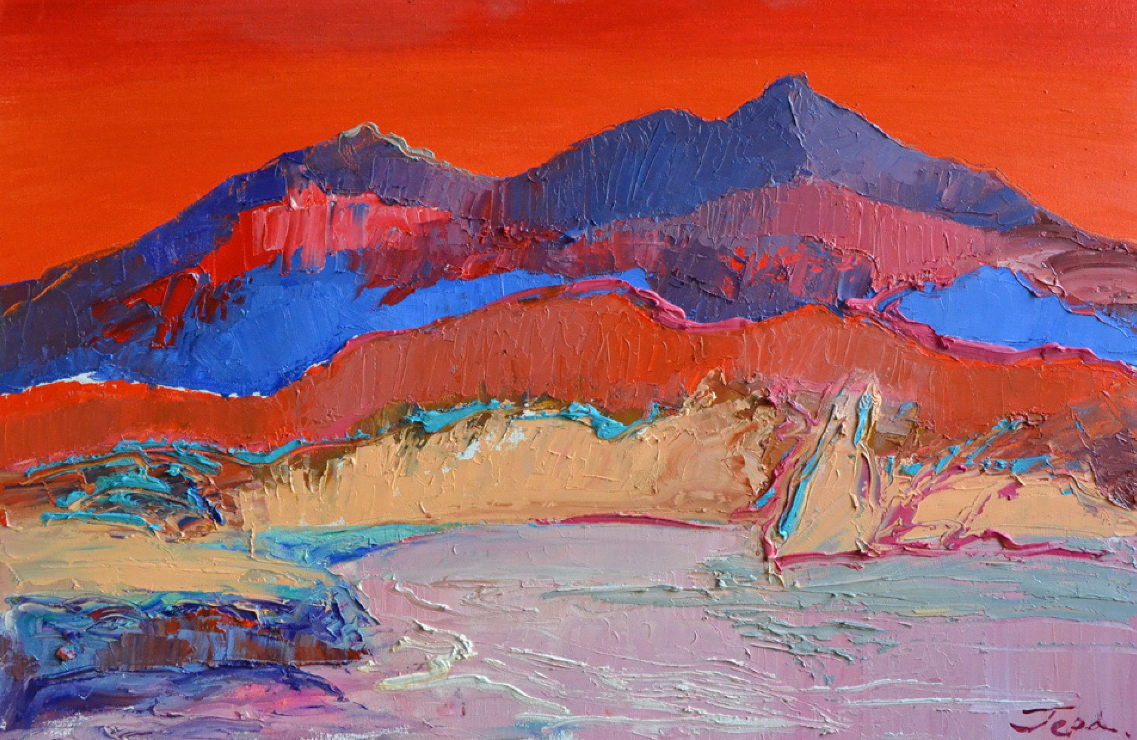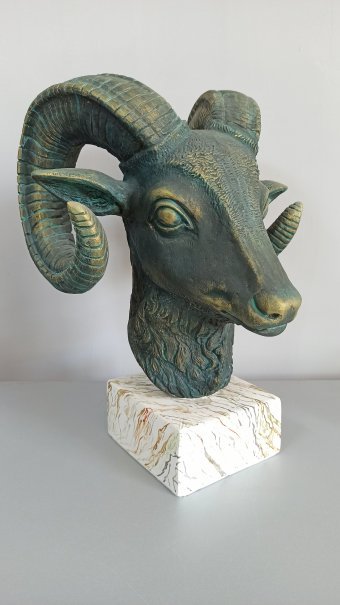What are the 10 styles in painting?

Traveling the world of art is a fascinating and unforgettable experience. However, the labyrinths of art are as complex and intricate as they are enjoyable. And in order not to get lost in them, you need a map. Just as street names help us find the right path on a city map, so we orient ourselves on an art map with the help of names — styles, materials, trends, and genres. Throughout history, art has developed a variety of styles. What is style? This is a general direction in the development of art, samples of which are united by an ideological meaning, transmission technique, and characteristic techniques.
So, what are the most popular painting styles? And how many styles are there? Let’s look at this topic in more detail.
Styles in Painting: A Guide to the World of Art
Art is not a static structure. Like culture itself, art is constantly changing: some elements disappear, and something appears and develops. Therefore, if we are talking about styles, it is useless to try making one list. But, on the other hand, it makes sense to consider the most popular styles of painting that artists are turning to today.
Realism
📕 Realism, in the arts, is the accurate, detailed, unembellished depiction of nature or contemporary life. Realism rejects imaginative idealization in favor of close observation of outward appearances (Britannica).
Realism is a painting art style that aims to give the viewer a reflection of the real world. This style, strange as it sounds today, was also a kind of revolution in art. In the 1850s, realism trends were a reaction to academic traditions and romanticism. For the first time, we see the appearance of works in this style in France. What were the realist artists trying to show? The key idea of the genre is the depiction of reality as we see it every day. There is no explanation or over-embellishment here. Everything is as it is in life. Objective reality, accuracy, truth — that’s what inspired realist artists. At the same time, they opposed the emotionality of works of art, which was characteristic of romanticism.
The main features of realism:
- image of reality;
- historical stories;
- emphasis on the details of interiors, and portraits;
- popularity of the landscape;
- specific and typical images.
The most famous realism artists: Edouard Manet, Ilya Repin, and Jules Breton.

Photo-realism
In the 1950s and 1960s, a new style gained popularity, which aimed to convey reality as realistically as possible. The term “photo-realism” belongs to Louis Meisel. He said that a photo-realist artist uses a camera, and saves photographs of what he is going to portray. A photo is not just a reflection of the surrounding reality, it is an archive, a collection of information. The task of the artist is to bring painting as close as possible to photography. How did the master photo-realist work? At first, he took pictures and collected images. Then these images were transferred from photography to canvas. The result was a canvas — a huge copy of the original photo.
The main features of photo-realism:
- photo effect;
- big scale;
- copying real images.
The most famous photo-realism artists: Richard Estes, Chuck Close, and Duane Hanson.

Expressionism
Every art lover surely remembers the painting that once shocked Europe in the first half of the XXth century: it is the work of Edvard Munch “The Scream”. This is one of the brightest examples of expressionism. This style encompasses not only painting, but also literature, sculpture, and other forms of art. Expressionism is based on the author’s subjective worldview. This is a world of emotions, often unpleasant, painful, and traumatic. The style originates as a response to the experience of war, in particular — the horror of world war. The reality on the canvases of expressionist artists often turns out to be distorted. It is not conveyed in a realistic, objective manner. There is always an emphasis on feelings, pushing the viewer to immerse themselves in the emotions of the author. No wonder expressionism is often correlated with psychoanalysis. The motives of pain, trauma, and screaming are among the most common in the works of this style. That is, it is precisely the motives that make the studies of psychoanalysts and the artistic experiments of the expressionists related.
The main features of expressionism:
- dominance of sharp contours of objects in the composition;
- deep emotional component of the creative idea;
- abundance of vivid feelings, such as horror, fear, indignation, and sometimes delight;
- celebration of bright colors and sharp contrasts.
The most famous expressionist artists: Amedeo Modigliani, Edvard Munch, and Ernst Ludwig Kirchner.

Impressionism
This style is called so, thanks to the French artist Claude Monet. His brush belongs to a painting called “Impression, Soleil levant”. That is, the impressions that such painting evokes in the public gave the name to the style. Impressionist painters spent a lot of time outdoors, painting from nature. And the British painter William Turner became famous for his extreme approach to painting. Once he tied himself to the mast of a ship to capture the fire of the London Parliament during a storm. What is impressionism? These are brush strokes, the lack of contour in the figures, and a special skill in the use of color and light. At first, the public did not like the paintings of the Impressionists. Why? It’s just that people are used to seeing the picture up close. And up close, impressionism is just an illegible set of spots. To see all the beauty and splendor of this painting, you need to move away from the picture for a few steps.
The main features of impressionism:
- thin, small, barely noticeable strokes;
- accuracy of transmission of light details;
- open composition;
- dynamism of painting;
- lack of clarity and contour.
The most famous impressionist artists: Pierre Renoir, Edgar Degas, and Claude Monet.

Abstract art
This style, above all, rejects a realistic depiction of reality. The goal of abstract artists is to evoke feelings, and emotions in the public. This art is non-figurative and non-objective. There are no specific plots, classical, or traditional techniques. What were abstractionists trying to convey? On such canvases, it will not be possible to see the accuracy of the transmission of images. Abstractionists conveyed the harmony of the world. According to the logic of artists, if nature is perfect, then copying it is useless. Accordingly, it should be transmitted by other means. Therefore, abstract paintings do not have a semantic plot load. These works of art should not be analyzed but felt.
The main features of abstract art:
- emphasis on line, plane;
- color spot;
- abstract configuration;
- lack of plot;
- almost complete absence of portraits.
The most famous abstract art painters: Wassily Kandinsky, Kazimir Malevich, and Mark Rothko.

Surrealism
The XXth century turned out to be rich in new styles. One of the strangest and most compelling new styles is surrealism. If expressionism turned to human psychology, surrealism went further: it sought to expose subconscious motives, hidden emotions, and forbidden feelings. One of the most famous artists who worked in this style was Salvador Dali. It also proved to be the most commercially successful. This subconscious was compressed by mixing reality and dream. For example, Salvador Dali often sketched images immediately after waking up. These images moved as far as possible from the ordinary, familiar meaning. The goal is to evoke similar feelings in the viewer, to make him doubt reality.
The main features of surrealism:
- combination of traditional perspective and color rendering with abstractions;
- fantastic images;
- paroxysm of color, forms, and images;
- allusions;
- visual deception;
- irrationality;
- liberty;
- phantasmagoric stories.
The most famous surrealist artists: Max Ernst, Rene Magritte, and Salvador Dali.

Pop art
In the 1950s — first in Europe (in Britain), and then in the USA — a new direction began to emerge, which was called pop art. One of the icons of this style is Andy Warhol. It is he who brings into fashion attention mass culture, the replication of works of art. At this time, the ideas of the Frankfurt School were also developing, whose representatives very closely studied mass culture as a new cultural phenomenon. The basis of pop art is ordinary objects and everyday life. In the works of this style, we see what surrounds us: sometimes even vulgar, banal elements of our life, everyday life, and relationships. Very often, artists used irony to implement their ideas in art. Later, pop art became the basis of such forms of culture as comics and advertising.
The main features of pop art:
- catchy forms;
- iridescent, bright colors;
- replication;
- denial of modern values;
- repetition of elements.
The most famous pop art painters: Richard Hamilton, Andy Warhol, and Roy Lichtenstein.

Symbolism
The main features of symbolism:
- presence of symbolic meaning;
- decadent, decadent motives;
- cult of mystery and beauty;
- worship of the ideal;
- assortment of genres.
The most famous symbolist artists: Mikhail Vrubel, Gustave Moreau, and Viktor Vasnetsov.

Cubism
In the XXth century, another style, important for the history of art, was born — cubism. This style owes a lot to Pablo Picasso. Cubism manifested itself most of all in European (mainly French) painting and sculpture. However, we see that the features of cubism also appeared in such unexpected “regions” of culture as music, literature and architecture. It was a revolution in art that began in 1908 with a composition by Georges Braque called “Houses at l'Estaque”. This work was exhibited as part of the Paris Autumn Salon. At that time, the ideas of Georges Braque were too innovative, and society was not ready to accept them. However, to give a new direction was still given away. The Impressionists replaced the form and composition with the transmission of the play of light, with an emphasis on colors. The Post-Impressionists returned rhythm, color and plane to the composition in painting. Finally, the Cubists fought to bring geometric forms back to the fore in art.
The main features of cubism:
- recombined objects;
- broken objects, deformation of objects;
- narrow range of topics (mainly still-lifes, portraits, and cityscapes);
- lack of realism;
- abstract shapes.
The most famous cubist artists: Marcel Duchamp, Pablo Picasso, Georges Braque, and Fernand Léger.

Futurism
In the XXth century, there are many experiments in art. Among them is futurism, a desire for movement, the future, and ideals. The works of futurism were characterized by courage and innovation. This was influenced by the rapid development of technology, industrialization, and a surge of scientific research. Futurist artists sought to demonstrate their vision of the world and models of its structure. A distinctive feature of this style is the desire to find a way to show the dynamics of movement with static means of painting.
The main features of futurism:
- novelty;
- rejection of old rules;
- departure from the old norms and traditions in painting;
- experiments related to form and content;
- unusual shapes and bold lines;
- new words and expressions (in the titles of works).
The most famous futurist artists: Umberto Boccioni, Filippo Marinetti, and Giacomo Balla.

Of course, this is not a complete list of styles. This topic can be devoted to a huge collection of research papers. However, this is quite enough not to get lost in all this qualitative variety of styles in art.





















